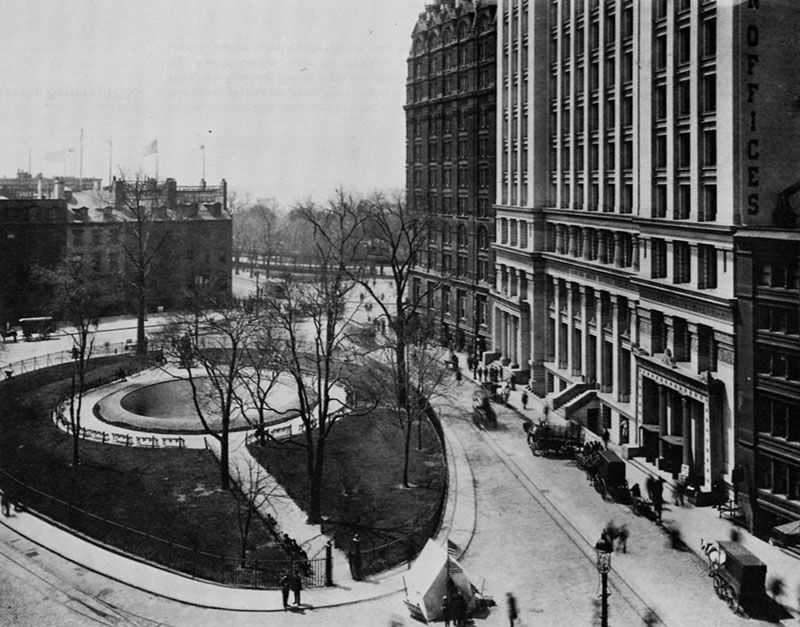NYC’s Forgotten ‘War on Christmas Trees’
Discover how an obscure holiday crackdown affects festive street vendors today!


As Manhattan’s oldest public park, Bowling Green is deeply rooted in New York City history. In addition to serving as a colonial center of activity in the 17th century, the site was previously used as council grounds for Native American tribes, as well as a parade field and cattle market, where people would sell and buy livestock for their farms. In fact, it was on this very site that the legendary sale of Manhattan to Peter Minuit took place in 1626.
Not surprisingly, we’ve shined a spotlight on the park on our upcoming tour of Dutch New Amsterdam. Up until now, we’ve mostly focused on the park’s history, but a simpler question still persists for many New Yorkers: Why is Bowling Green called Bowling Green? (And, additionally: Did people actually bowl here?)
The short answer is yes.
As for the history, the NYC Department of Parks writes that Bowling Green served as an informal communal ground until the 1740s, when the Common Council — the area’s governing body — offered the land for rent at the “cost of one peppercorn per year.” The site was designated a park in 1733, and three lessees, landlords John Chambers, Peter Bayard, and Peter Jay, were responsible for developing it into “the delight of the Inhabitants of the City” with trees, walking paths and a bowling green.

Image from Wikimedia Commons
In fact, bowling was played in America from the early 1600’s and lawn bowling was especially popular before the Revolutionary War. According to New York’s Medieval Sports Center by Paul Halsall, it was considered to be the “Sport of Kings,” played by notables like George Washington, George Vanderbilt, John D. Rockefeller and Walt Disney. The game itself, as Scientific American notes, was comprised of “rolling biased balls so they stop as close as possible to a smaller ball.”
As you can imagine, this constant rolling action can take quite a toll on a lawn. For its upkeep and maintenance, sheep were probably allowed to graze on the field (a common practice during this time). By 1914, however, part of Bowling Green was razed to make way for a subway station, and the lawn was consequently transferred to Central Park, which holds a greenmarket in the space to this day (see photo here).
In the time since then, the park has been rebuilt — first, in preparation for the 1939 World’s Fair, and then again during a 1976-77 renovation, which restored it to its 18th-century appearance. Walking by today, you’d never suspect its past life as an open recreational space, given the splattering of high rises that surround it.
To learn more about New York City’s history, join us for our tour of remnants of Dutch New Amsterdam.
Next, read about the history of Bowling Green in Manhattan’s South Ferry, The Oldest Public Park in NYC and discover 10 Things the Dutch Introduced to America from Bowling to Santa Claus to Democracy.
Subscribe to our newsletter